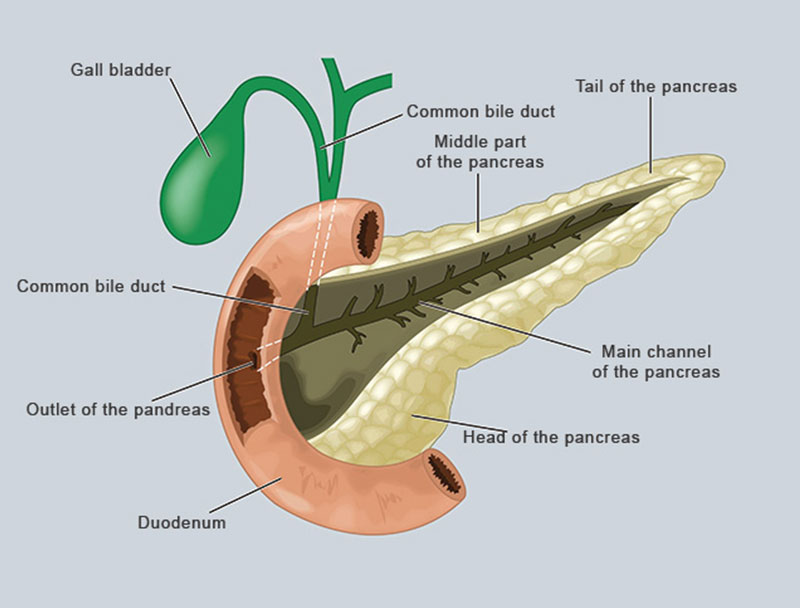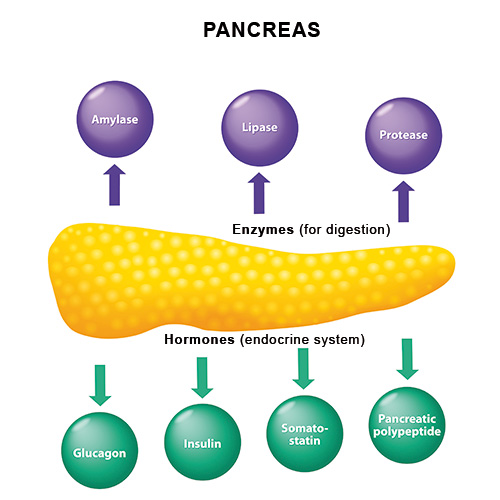Function of the pancreas
Physiology - or alternatively - the function of the pancreas
The pancreas has two main functions or tasks: the exocrine and endocrine functions. Exocrine means the glands give a secretion to the outside (skin) or inside (here: colon). Endocrine function is the release of secretion into the blood stream.
Exocrine function
The pancreas produces 1.5 – 3 litres of saliva in the acinous cells daily, which travels through a branched system of channels, including the main pancreas channel in order to reach its goal: the duodenum. This is a clear, transparent fluid. The fluid consists of bicarbonate, which is necessary to neutralize the extremely acidic chyme and ensure an alkaline environment in the duodenum. The digestive enzymes can only unfold their true effectiveness in an alkaline environment. The pancreatic saliva also contains the digestive enzymes which break down the proteins, carbohydrates and fats in the chyme. It wouldn’t be possible for the nutrients to be absorbed by the colon without this breakdown through the digestive enzymes.
There are more than 20 different digestive enzymes, but the most important ones for the breakdown of proteins are trypsin and chymotrypsin, alpha-amylase for the breakdown of carbohydrates and lipase for the breakdown of fats. These enzymes are only activated in the colon, in order to prevent the pancreas digesting itself. The secretion of pancreatic saliva is stimulated by the hormones secretin and cholecystokinin and the stomach movement is stimulated by the vagus nerve. The pancreas has a large reserve capacity of digestive enzymes and symptoms of illness will only become apparent when 80% is destroyed. The gall bladder plays an important part in the digestion of fats and ensures their solubility in the chyme. That’s why bile flows into the mixture from the liver and the gall bladder shortly before everything goes into the duodenum.
Endocrine function
In its function as an endocrine gland, the pancreas produces several important hormones. The hormones are produced in the Isles of Langerhans, groups of glandular tissue, which can be found all over the pancreas, but which are situated mainly in the middle part of the pancreas and the tail. These hormones have very important tasks. Insulin is responsible for the absorption of sugar in the body cells, which require it for their work and for energy. If insulin is missing or there is too little of it, then the blood sugar level rises whilst the sugar is missing in the cells.
Glucagon is the “opposite number” to insulin. Glucagon encourages the liver to release sugar into the circulatory system when the blood sugar level falls. So, together, insulin and glucagon keep the necessary balance to ensure that the cells have sufficient energy. The hormone somatostatin slows things down. It curbs excessive discharge of certain hormones, gastric acid, the secretion of digestive enzymes etc. Further important pancreatic hormones are polypeptides (feeling of satiety) and ghrelin (feeling of hunger). J. H.





